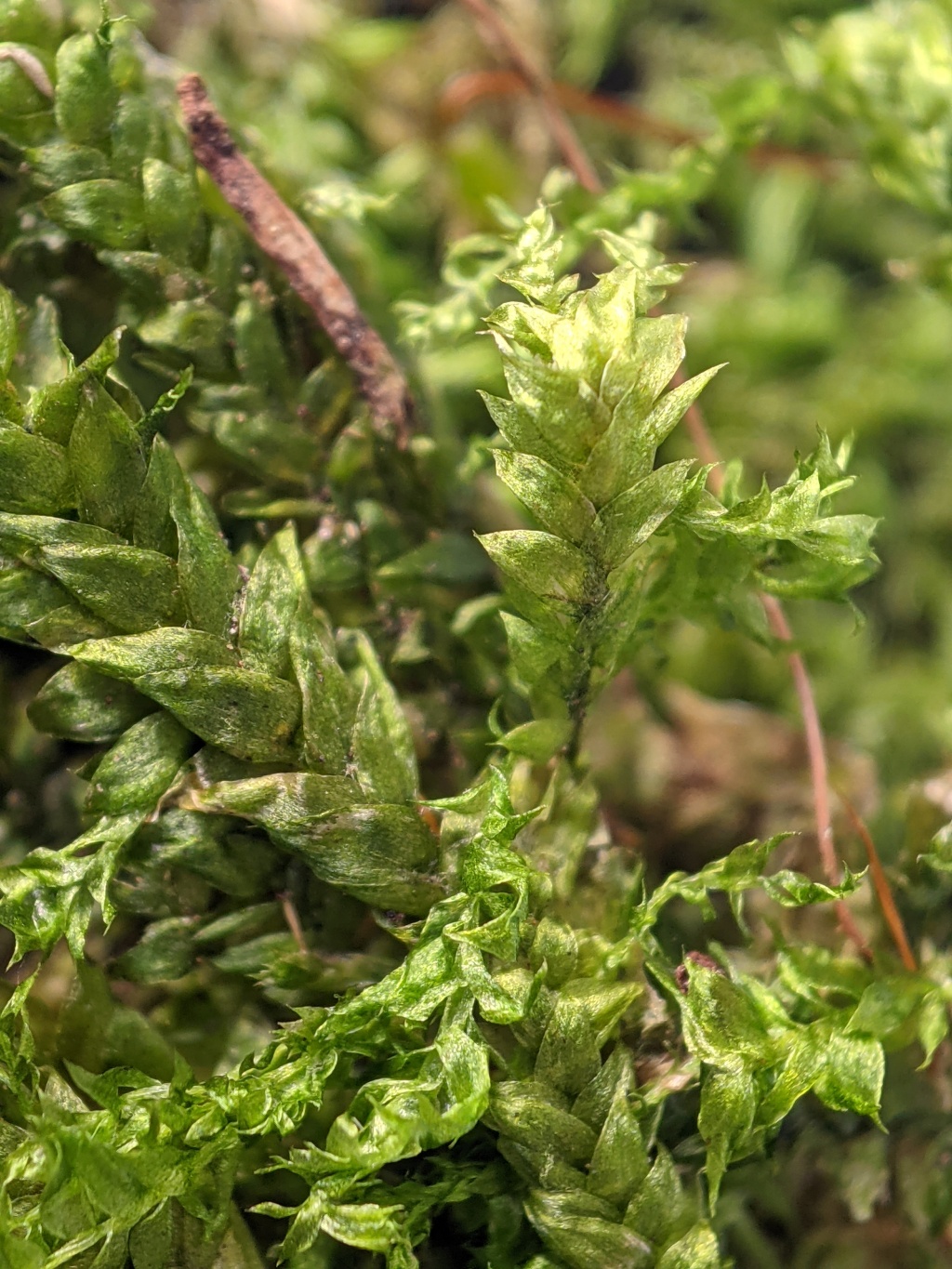Plagiothecium lamprostachys
(Hampe) A.JaegerAutoicous. Asexual propagules absent. Mats on rocks or rarely on tree bases, tree ferns or soil. Stem 2–6 cm long, irregularly branched, with scattered fascicles of brown rhizoids, with a small and indistinct central strand. Leaves ovate, asymmetric to almost symmetric, 1.2–2 mm long, 0.5–1.2 mm wide, ±concave; costa forked just above base, the longer branch extending 1/4–1/2 leaf length; apex acute to broadly acuminate; margins entire or with a few minute teeth at apex, plane or narrowly revolute near base, without a border; laminal cells linear, 90–175 μm long, 9–15 μm wide, smooth, becoming shorter and wider near base; alar cells elliptic to rectangular, inflated, forming long decurrencies 3–5 cells wide, often somewhat auriculate. Setae 15–25 mm long, red. Capsules inclined to horizontal, cylindric, curved, (1.5–) 2–2.5 mm long. Operculum conic, 0.5–0.8 mm long.
GipP, CVU, GGr, EGL, EGU, HSF, HNF, OtR, HFE, VAlp. In the wetter mountainous areas (e.g. the Grampians, Otways, Dandenongs, Yarra and Strzelecki Ranges, Victorian Alps and Errinundra Plateau) usually in fern gullies among wet sclerophyll forest or in cool-temperate rainforest, or occasionally next to creeks in gorges in drier vegetation. Also NSW and Tas. New Zealand and Campbell and Macquarie Islands.
 Spinning
Spinning

